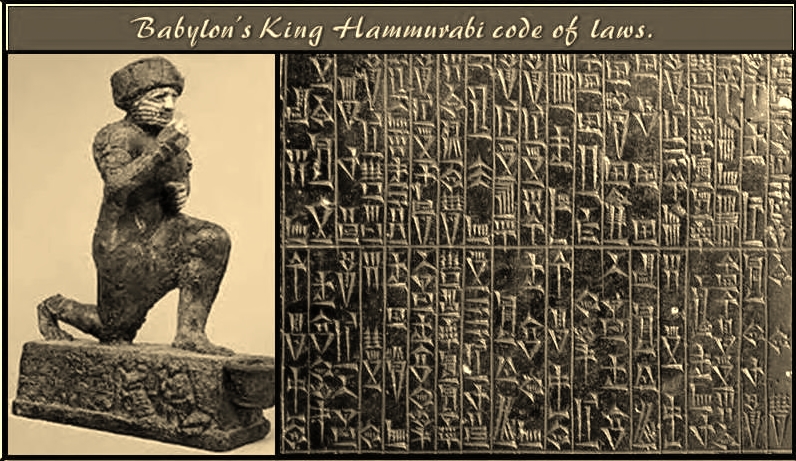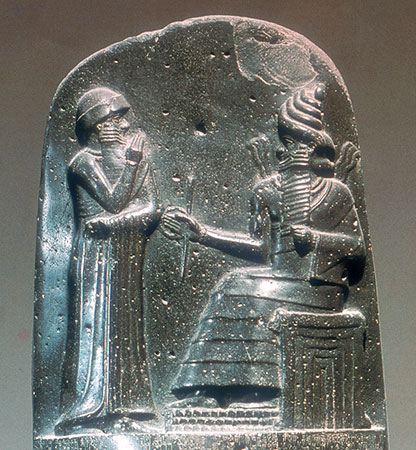5.1. Politics and Law under Hammurabi's rule
The known history of Babylon, then, begins with its most famous king: Hammurabi (1792-1750 BCE). According to historians, He was an Amorite prince who sat on the throne upon the abdication of his father, King Sin-Muballit, and quickly transformed the city into one of the most powerful and influential in all of Mesopotamia. Hammurabi’s law codes are well known but are only one example of the policies he established to maintain peace and encourage prosperity. He enlarged and heightened the walls of the city, engaged in great public works which included magnificent temples and canals, and made diplomacy the milestone of his administration. So successful was he in both diplomacy and war that, by 1755 BCE, he had united all of Mesopotamia under the rule of Babylon which, at this time, was the largest city in the world, and named his realm Babylonia.

Here is the introduction to the Code of Hammurabi
“Hammurabi, the king of righteousness, on whom Shamash has conferred the law, am I. When Marduk (the supreme god Babylonians used to worship) sent me to rule over man, to give protection of the right to the land, I did right and righteousness brought about the well-being of the oppressed.” (you can find a document containing the Code of Hammurabi translated in the
Bibliography)
Hammurabi’s code is one of the oldest deciphered writings of significant length in the world. Written in about 1754 BCE by the sixth king of Babylon, Hammurabi, the Code was written on stone stele—slabs—and clay tablets. The Code consists of 282 laws with scaled punishments depending on social status, adjusting "an eye for an eye, a tooth for a tooth". For example, if a person from a noble class broke an enslaved person’s arm, they would have to pay a fine, whereas if a noble person broke another noble person's arm, the offending noble would have their arm broken. Some have seen the Code as an early form of constitutional government, the presumption of innocence, and the ability to present evidence in one's case.

